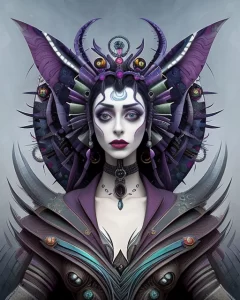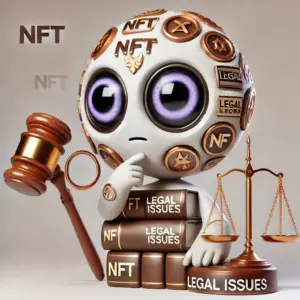Non-fungible tokens (NFTs) are a type of cryptographic token that represents ownership of a unique digital asset. Unlike cryptocurrencies, which are fungible, meaning they can be exchanged or replaced with one another, NFTs are unique and cannot be replicated. This makes them ideal for representing ownership of digital assets such as artwork, collectibles, music, or even virtual items in video games.
How NFTs are Created
NFTs are created through a process called minting. This involves associating a unique digital asset with a corresponding NFT token on a blockchain. The most popular blockchain for minting NFTs is Ethereum, but other blockchains such as Flow and Tezos also support NFTs.
The minting process involves linking the asset’s metadata, such as its description, creator, and unique identification, to the token’s code. Once minted, the NFT becomes an integral part of the blockchain, ensuring its permanence and verifiable ownership.
How NFTs Are Tracked and Traded
NFTs are tracked on the blockchain, which is a distributed ledger that records all transactions. This makes it impossible to counterfeit or duplicate NFTs, and it also allows anyone to verify who owns an NFT at any time.
NFTs can be bought, sold, and traded on NFT marketplaces, which are online platforms that connect buyers and sellers. Some of the most popular NFT marketplaces include OpenSea, Rarible, and SuperRare.
Why NFTs Are Valuable
NFTs are valuable because they represent ownership of unique digital assets. This can be appealing to collectors who want to own a piece of history or a piece of art that they believe will appreciate in value over time. Additionally, NFTs can be used to provide access to exclusive content or experiences, which can also drive their value.
The Potential of NFTs
NFTs have the potential to revolutionize the way we interact with digital assets. They can be used to create new forms of ownership, monetization, and community. For example, NFTs could be used to create a new market for digital collectibles, or they could be used to give creators more control over their work.
Challenges Facing NFTs
Despite their potential, NFTs also face a number of challenges. One challenge is that NFTs are often expensive to mint and trade, due to the fees associated with using blockchain technology. Additionally, NFTs are still a relatively new technology, and there is a lack of standardization and regulation in the NFT space.
The Future of NFTs
The future of NFTs is uncertain, but they have the potential to play a significant role in the digital economy. As technology matures and adoption increases, we can expect to see NFTs integrated into a variety of industries, from gaming to fashion to art.
The Impact of NFTs on the Digital World
NFTs have the potential to revolutionize the way we interact with digital assets, creating new forms of ownership, monetization, and community. Here are some of the potential impacts of NFTs on the digital world:
- Creators can take control of their work: NFTs can give creators more control over their work by allowing them to set their own terms for distribution and monetization. They can also use NFTs to create exclusive content or experiences for their fans.
- New markets for digital collectibles: NFTs can create new markets for digital collectibles, such as art, music, and gaming items. This can lead to increased demand for digital assets and a more vibrant creative economy.
- More efficient and transparent ownership: NFTs can make ownership of digital assets more efficient and transparent by using blockchain technology to track ownership and prevent fraud. This can help to reduce disputes and create a more secure environment for buyers and sellers.
- New forms of community and engagement: NFTs can be used to create new forms of community and engagement around digital assets. This can lead to increased interaction between creators and fans, and it can also help to foster new forms of creativity and collaboration.
Challenges and Risks of NFTs
While NFTs have the potential to revolutionize the digital world, they also face a number of challenges and risks. These include:
- Environmental impact: The minting and trading of NFTs can have a significant environmental impact, as it requires a lot of energy to power the blockchain networks that they operate on.
- Speculation and volatility: NFT prices can be volatile, and there is a risk of speculation in the NFT market. This could lead to price bubbles and crashes, which could harm investors.
- Lack of regulation: The NFT market is currently unregulated, which means that there is no legal framework for dealing with fraud, scams, or other issues that may arise. This could lead to consumer protection concerns.
- Interoperability: NFTs are currently siloed on different blockchains, which means that they cannot be easily transferred or used across different platforms. This could limit the adoption and usefulness of NFTs.
Despite these challenges, the potential benefits of NFTs outweigh the risks. As the technology continues to evolve and mature, we can expect to see NFTs play an increasingly important role in the digital world.
Conclusion
NFTs are a new and innovative technology with the potential to revolutionize the way we interact with digital assets. They have the ability to create new forms of ownership, monetization, and community, and they have the potential to reshape the digital economy. However, it is important to be aware of the challenges and risks associated with NFTs, and to invest responsibly. With careful consideration and responsible use, NFTs have the potential to be a powerful force for good in the digital world.






